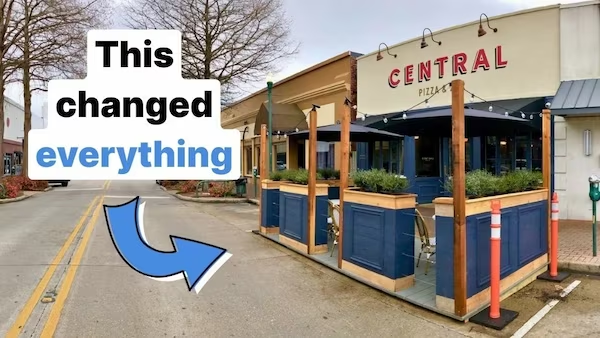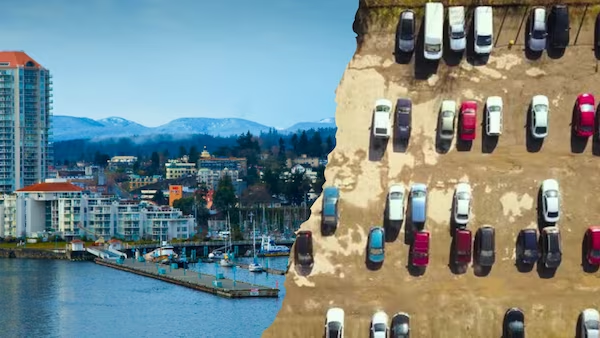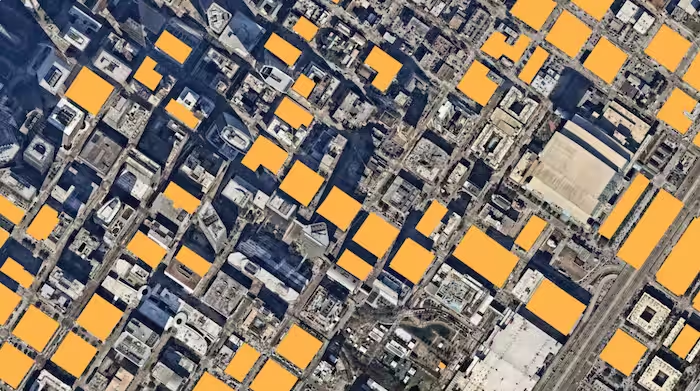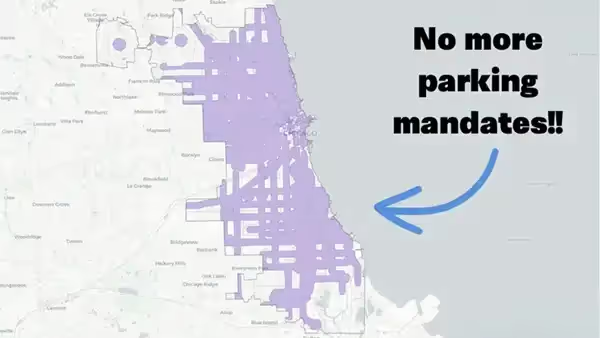Editor's Note: The challenges our cities face are growing, but so is the strength of this movement. Every story we share, every idea we spread, and every tool we build exists because people like you are committed to showing up. Your membership isn’t passive—it’s the momentum that makes change possible.
Big cities get the headlines, but small towns are flipping the script.
From Texas to Alberta, places with just a few thousand people are smashing outdated parking rules and taking back agency when it comes to how they build. In fact, the Sightline Institute found small towns are twice as likely as big cities to scrap these mandates.
Here are six towns, all under 15,000 residents, leading the way.
Ecorse, Michigan (pop. 9,512)
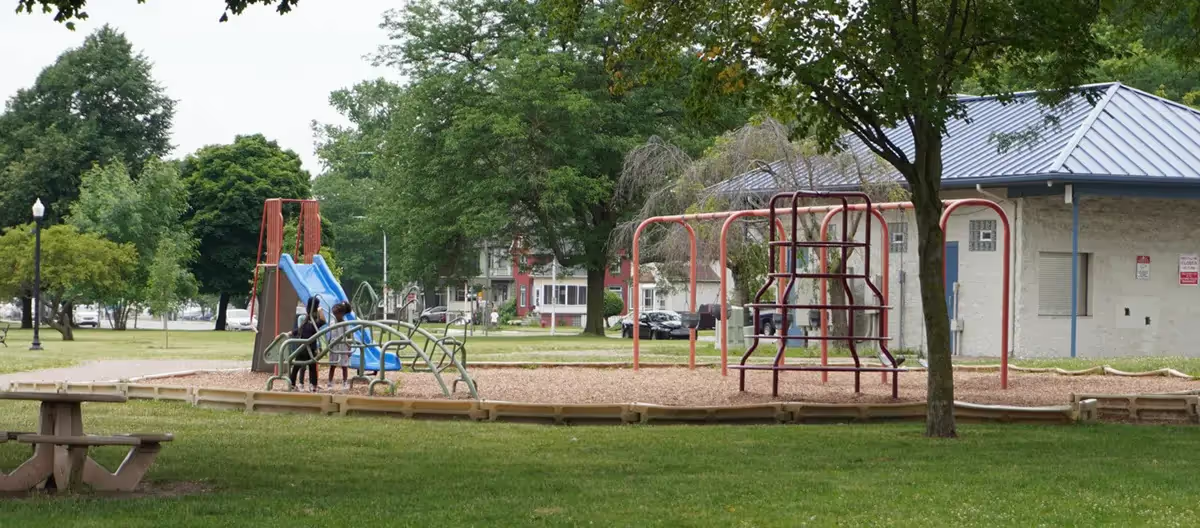
Parking mandates eliminated: 2021
In 2020, United States Steel announced it would scale back operations in Ecorse, its longtime company town. Faced with the loss of its biggest employer, the city responded not with paralysis, but with a full zoning overhaul—including the elimination of parking minimums.
“We didn’t really get any pushback,” city planner Nani Wolf told Sightline Institute. “We have way more parking than we need, and I think everybody was generally in recognition of that.”
The reform is already bearing fruit. Wolf shared one example: a former ice cream shop that a new owner hoped to convert into a Puerto Rican restaurant. The property only had two parking spaces—a potential deal-breaker under the old rules. But now, that’s no longer an obstacle. “Having those parking minimums removed has made it so much easier and quicker for people to reoccupy those buildings,” she added.
Bandera, Texas (pop. 671)
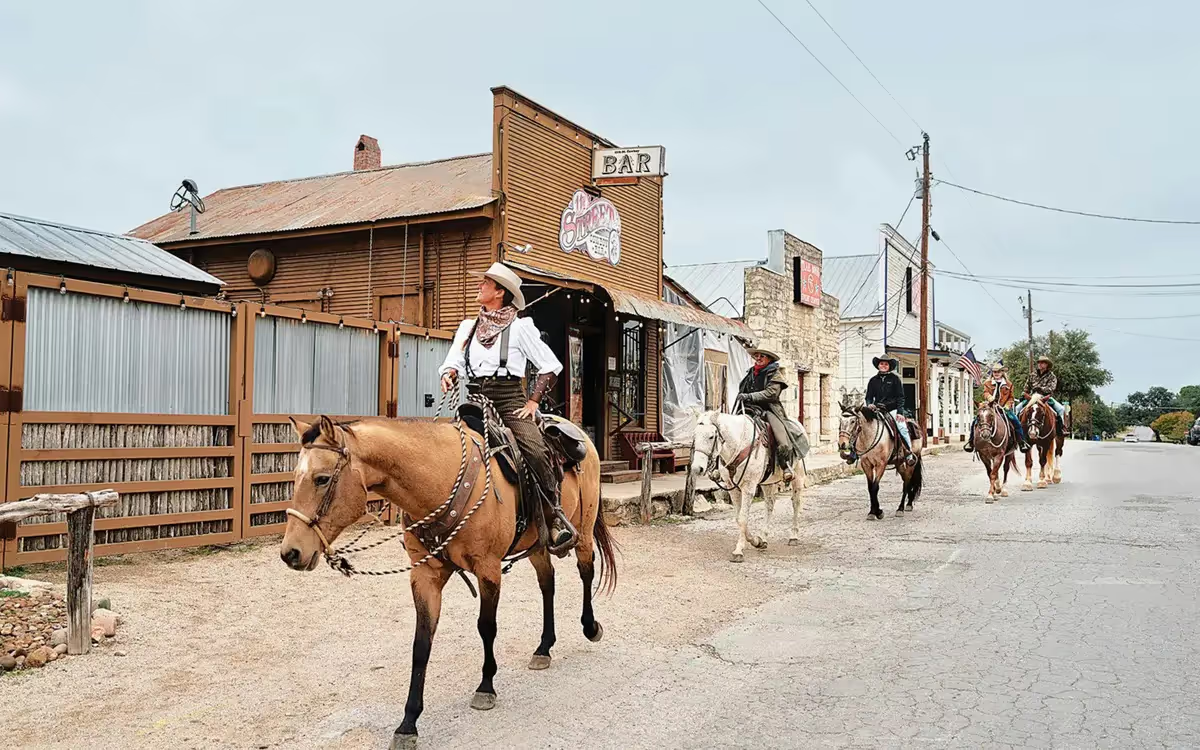
Parking mandates eliminated: 2021
In the self-proclaimed "Cowboy Capital of the World," the real frontier is reform. In late 2021, the city of Bandera scrapped its parking minimums entirely. Moreover, it adopted parking maximums and expanded opportunities for shared parking between businesses and residences.
The motivation? Part practicality, part preservation. Dealing with parking mandates was a hassle, especially in a small town where context matters. But Bandera also wanted to protect its distinctive character.
Here, parking is meant to stay out of sight—often tucked behind buildings in what some call an “urbanist mullet”: all business in the front, parking in the back. But the nickname carries a deeper truth—parking doesn’t make a place. People do. And Bandera is planning accordingly.
Branson, Missouri (pop. 12,638)
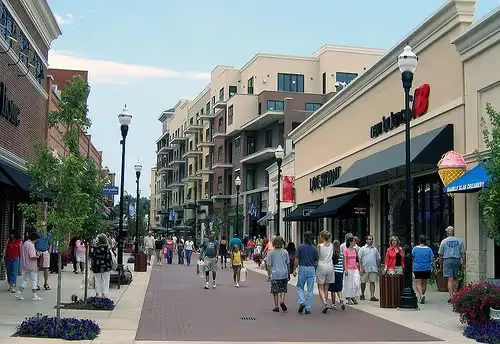
Parking mandates eliminated: 2018
In 2018, Branson—best known for its steady stream of tourists and traffic—took a bold step. The city didn’t just eliminate parking minimums. It went further, adopting parking maximums to prevent overbuilding.
Local leaders recognized that excessive parking wasn’t helping the economy—it was eating up land, inflating costs, and limiting how downtown spaces could be used. By capping, rather than requiring, off-street parking, Branson opened up its streets for more creative uses than just car storage.
In a town that thrives on visitors, this wasn’t a step away from tourism. It was about giving the next generation a city that still works.
Canandaigua, New York (pop. 10,156)
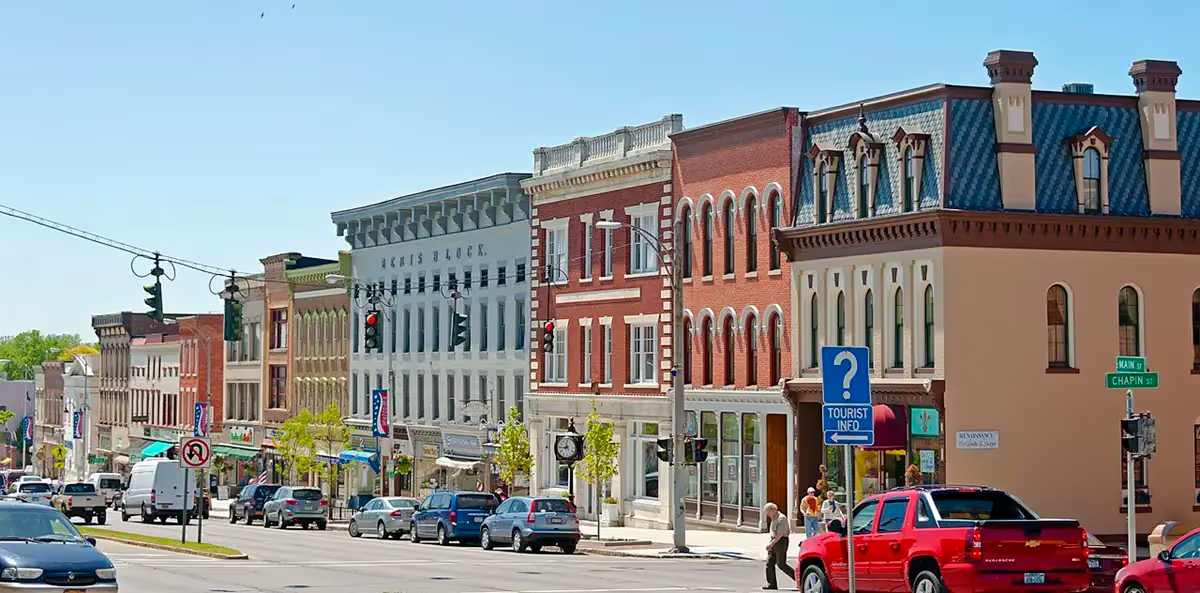
Parking mandates eliminated: 2020
Nestled in New York State’s famed wine country, right on the shores of the Finger Lakes, Canandaigua made a decisive break from outdated parking rules in late 2020. The town eliminated all off-street parking minimums—not just in select districts, but citywide.
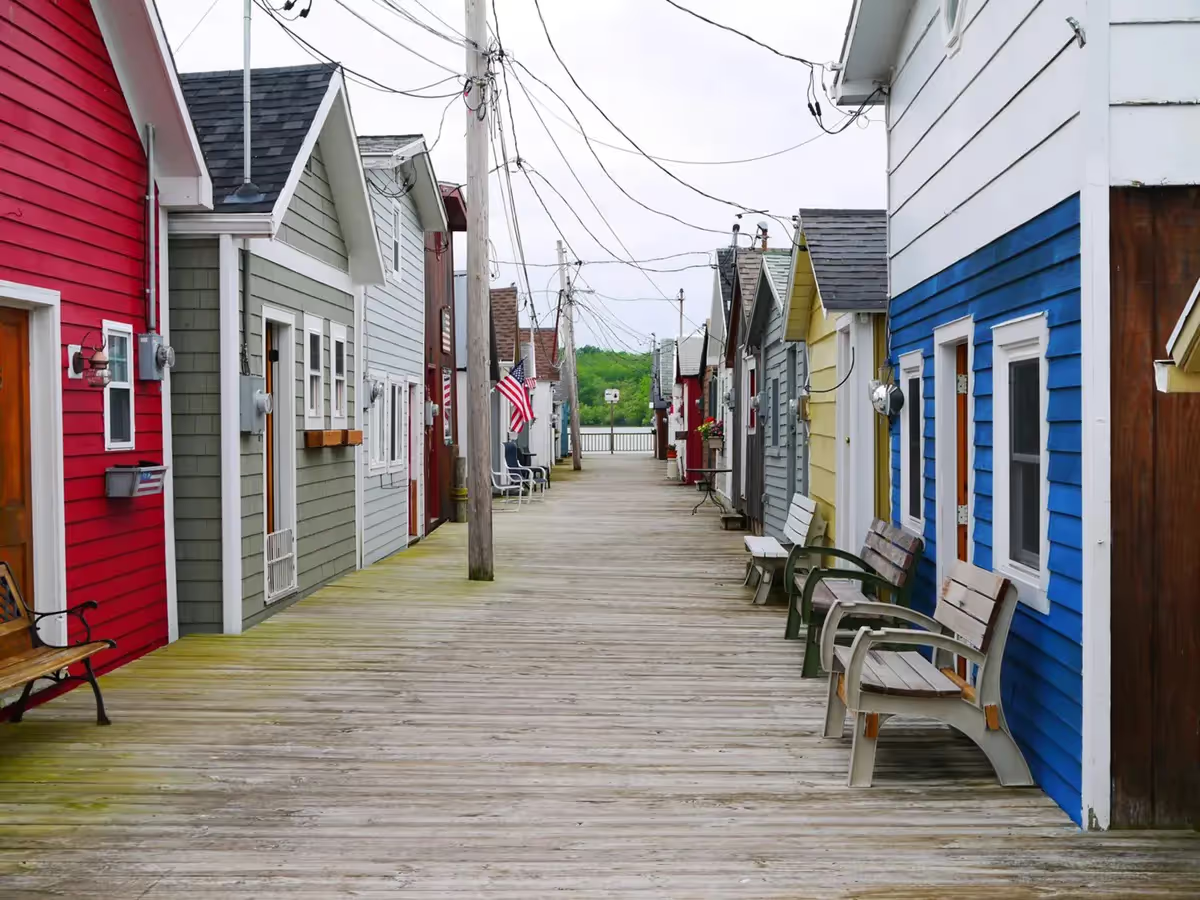
The motivation was clear: the existing mandates were neither based on scientific data nor sensitive to the unique local context. As a June 2020 city memo highlighted, one-size-fits-all parking requirements often demand more spaces than actual use, creating unnecessary costs and barriers for development.
Since removing these mandates, Canandaigua requires developers to submit parking demand studies tailored to their specific projects, allowing the city to assess needs case-by-case. This approach recognizes the varied character of Canandaigua’s neighborhoods—from bustling downtown streets to lakeside businesses—bringing flexibility and common sense to land use.
Calumet, Michigan (pop. 621)

Parking mandates eliminated: 2022
“To minimize excessive areas of pavement which detracts from the aesthetics of the Village and contributes to high rates of stormwater runoff, this Ordinance establishes a maximum number of parking spaces for each use.”
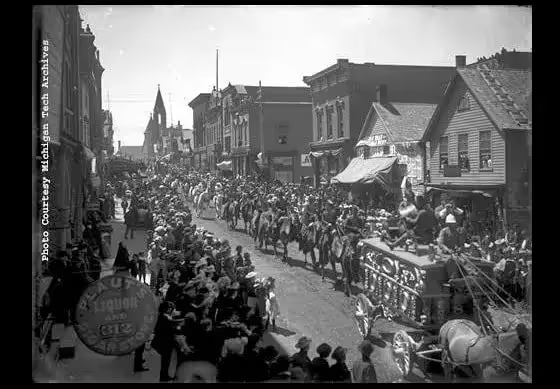
Calumet figured something out: parking lots don’t build community. One-size-fits-all parking rules were slowing down the very reinvestment the town hoped to attract, and so local leaders pulled the plug. And in recognition of what makes the town of less than a thousand residents special, they’re enforcing a cap on how much parking can be built.
Calumet’s decision didn’t make national headlines—but it should have. In a region where parking minimums are often treated as untouchable, this tiny town made a deliberate choice to stop building around cars and start planning for people.
High River, Alberta (pop. 14,324)

Parking mandates eliminated: 2015
High River’s elimination of parking minimums came in the wake of a natural disaster—and a rare opportunity for thoughtful rebuilding. “In 2013, we had a huge flood event that affected many of our small towns,” Jackson Wiebe told Strong Towns back in 2016. “As a result of that, a lot of our municipalities got a chance to rebuild. There was quite a bit of provincial money up for grabs to rebuild.”
As the town crafted its recovery plan, it held tight to its motto: “High River is a people-first community where people live, work, play and invest. We take that very seriously in our town,” Wiebe said.
The existing parking minimums required far more spaces than local businesses realistically needed, creating barriers to reopening and investment in a community already struggling to bounce back. In response, High River eliminated downtown parking minimums in January 2015—cutting red tape and clearing the path for business owners to get back on their feet quickly.
“We’re leaving parking to market demand,” Wiebe explained. “Developers can put in as much parking as they want. If you think you can sell it with no parking, go for it.”
The Lesson: Real Reform Starts Local
None of these towns waited for a statewide mandate. They didn’t commission million-dollar studies. They didn’t wait for a crisis. (Okay—some of them did. But they acted.)
They saw what was in front of them: too much parking, too many vacancies, too many hoops to jump through. So they did something about it. Big cities may get the credit. But these small towns are showing what real resilience looks like: being adaptable.


